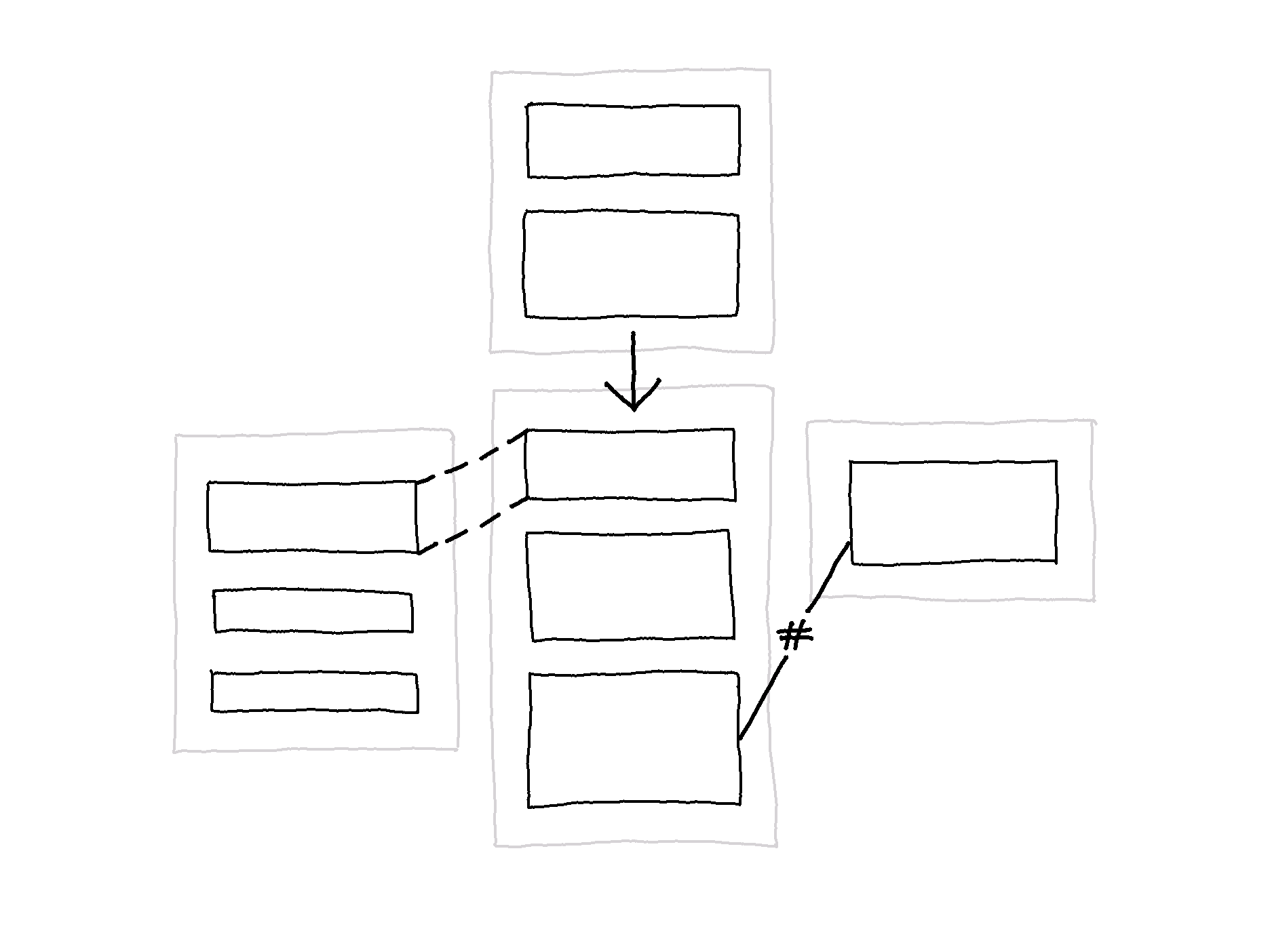Conclusion
An interactive prototype of a digital document system has been developed by taking new approaches to representational concepts for mapping and accessing the interconnective structure of documents. The concepts have been derived through examining prominent document systems considered influential in the evolution of information technologies. The method is based on an iterative process of content creation, concept design, and creating interactive prototypes of a digital document system. Through examination, the prototype was created based on the following:
- Documents are modular.
- Links are distinguished according to types of connections.
- There are multiple renditions of content.
- It is a closed system of different types of internal connections.
Based on the conception of documents as modular, the resulting prototype comprises three link types developed for creating connections according to type:
- Transclusion —-
- Taglink –#–
- Seqlink ↓

All links are bidirectional. The link types, link direction, and link endpoints are visually distinguished and implemented through a diagrammatical visual language. Transclusions are the connections made when a content item in a document is included in another. The visual form of transclusions is implemented as a dashed line with an arrow pointing to (and can be accessed by selecting) the alias of the source document.
A transclusion-type link enables a content item to be inserted from one document into another, keeping track and providing direct access to its original context.
Taglinks were developed to accommodate all the other types of connections — the arbitrary conceptual connections created between content items. Borrowing from the diagrammatical visual language of concept maps, taglinks make it possible to attach labels to describe the connection between two documents. Utilizing the common usage of hashtags, taglinks taglinks enable the organization of links based on any taxonomy.
Importantly, taglinks replace linking mechanisms derived from paper documents that are used for mapping both implicit external connections (e.g., paraphrased content with citations) and explicit internal connections (e.g., footnotes).
Unlike footnotes, with taglinks, there is no implicit hierarchy; instead, multiple sequences are on the same level. Within a document are the vertical content-item-by-content-item sequence and the horizontal linked documents (represented as aliases) offering other sequences.
Seqlinks determine the order of documents in a sequence, which, together with headings within a document, allow the possibility of creating hierarchical structures. Implemented as lines with arrows pointing to the previous or the next document in a sequence, which can be selected to traverse a document sequence. It is also possible to rearrange documents in Zoomed-Out View according to seqlinks. The sequential order of documents (and the possible hierarchical order of content items within a document) co-exists with the order offered by the other two link types.
The prototype uses sample content developed throughout the process, serving as an example of how these three link types can be applied to realize the interconnective structure of documents and how it can be accessed through interaction.
Two view modes have been developed to engage with the complexity of information, enabling zooming in and out to gain different perspectives on documents at different levels of detail.
Zoomed-Out View is at the document collection level, and the Zoomed-In View is at the document level.
Zoomed-Out View is a network diagram using a node-link model, in which all documents are viewed in relation to each other, conveying information about the size of each document (node size) and the number of links (line thickness). Functioning as an infographic, it allows understanding a lot of information at a glance. Zoomed-Out View needs to be further developed so that the node-link structure can be reconfigured based on metadata.
Zoomed-In View, the selected document is viewed in more detail, conveying information about the type of connections to/from that document by visually distinguishing the three link types, the link direction, and the link endpoint.
Switching view modes involves transition animations suggesting the movement of zooming in and out on documents. While in zoomed-in view, opening a linked document by selecting one of its aliases also brings about a transition animation, moving laterally. Additionally, a location frame shows the open document as an active node seen from the zoomed-out perspective, which supports orientation. Document metadata and taglinks enable a grouping mechanism and the capability to filter to view a subset of the document collection based on any taxonomy.
Currently in the proof of concept stage, the proposed next steps are to determine the technical implementation of the digital document system, develop features such as an edit mode, a time dimension, overlapping links, and extend the current filtering capabilities.